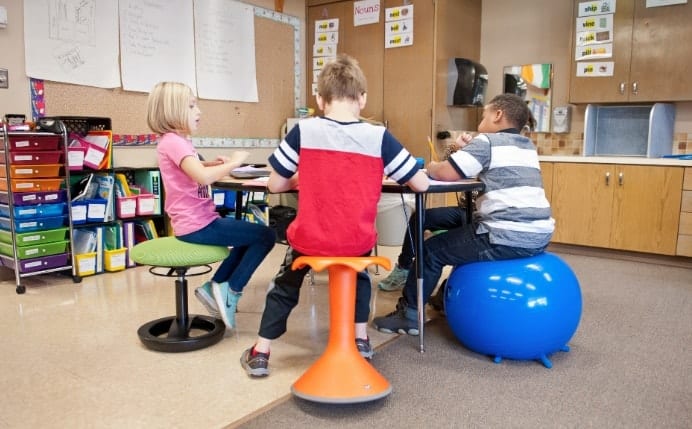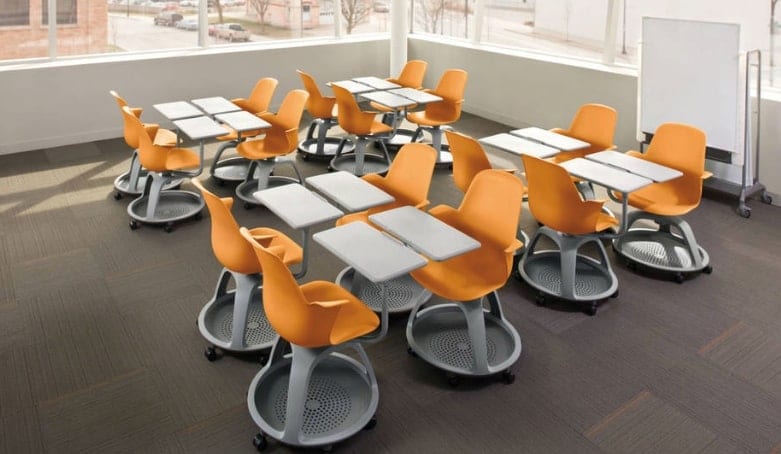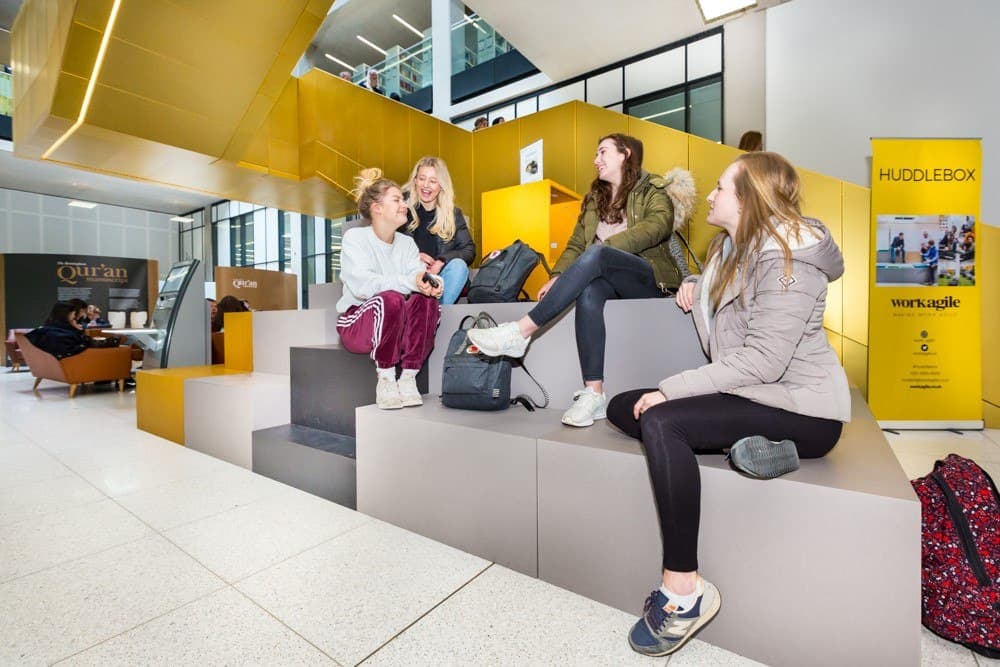“With the exception of the introduction of polypropylene chairs in the 1970s, there has been no significant innovation in educational furniture in the last fifty years” confirms FIRA (the Furniture Industry Research Association). What is more alarming is that children will spend approximately 15,000 hours sitting down during their school years and 13% of pupils aged 10 to 16 have cited recurring back pain. This has been accredited to inadequate seating and tables at the wrong height.
In an interesting document called ‘Safe seats of Learning’, Ty Goddard, Director at the British Council for School Environments, suggests that we could soon expect parents and pupils to campaign against ‘turkey twizzler’ style furniture, just as they did with the fatty food in schools not so long ago. “What we value in our homes; we should value in our schools” says Goddard. “What we wouldn’t accept in our workplaces, should not be part of our schools”.
With concentration, handwriting and overall wellness being affected by previously poor ergonomic design, it’s apparent that now more than ever is the time for innovative designers to create dynamic furniture to stimulate and accommodate student learning. Schools, Colleges and Universities across the world have been researching ways to capture students’ attention and improve their learning outcomes. WittFitt is an American company that has captured the attention of academia through its ‘learning in motion’ range of wobble stools, active seating and ball chairs. These soft spherical balls are often seen in gyms, however over 300 schools are currently using them and have seen remarkable results, especially for students with learning disabilities.

“The tiny movements kids make to stay balanced stimulates their brain and helps them focus” says Dr John Ratey, a professor at Harvard University. “Children with attention disorders have a sleepy cortex and exercise combats that mental disengagement. By using their core muscles, they’re flipping their cortex on and increasing their mental activity. The cerebellum part of their brain is really working to adjust, every millisecond”. Further evidence from WittFitt involving a research group of college students confirmed that they too felt more focused and actually preferred using the ball chairs to regular chairs.
Modern workers are demanding more from their employers: agile working, connectivity, ergonomic furniture and the latest technology, and it’s evident why. We know that workplace design affects human behaviour, so why provide our future workforce with uncomfortable, static and dull environments when they’re in the most important stages of brain development?
Steelcase Education studies have provided valuable insight regarding how classroom design can impact retention, attention, motivation, learning and academic achievement. In an Active Learning Post Occupancy Evaluation (AL-POE), research from Steelcase confirmed that after University students had experienced studying in both traditional environments and a more modern approach with ergonomic furniture, that classroom layout, design and furniture can heavily influence engagement in education.
Results included:
- The impact of the physical space significantly improved the experience for both students and faculty.
- The new classrooms contributed to higher engagement, the expectations of better grades, more motivation and more creativity.
- Improved active learning practices within the new classrooms.

An incorrect assumption is that as adults we no longer need to play in our surroundings. An article from The Telegraph discusses the ape-like primal compulsion we had as children to climb trees doesn’t leave us, just because we grow up. Scaling great heights helps us gain better perspective and unleashes our sense of adventure as we explore new territories. This is why many people seek abseiling, bungee jumping, or leaping out of aeroplanes as a thrilling activity – all of which involve heights.
When Huddlebox was placed within the University of Birmingham library, students were eager to climb, sit, and perch on the varying heights. Instead of furniture that you’re not allowed to climb on, these spaces are a collection of multi-tiered stackable seats that encourage people to explore new heights, activating that same primitive craving to move about and clamber freely. With an NUS survey finding 87% of students experience stress, perhaps introducing light hearted ‘pit stops’ are a way to help people relax between lectures.

To cultivate spaces of continued engagement, the evidence suggests that learning environments require a mixture of flexible, stimulating and dynamic furniture to activate and incorporate young people’s various learning styles.
Whether it improves posture, increases collaboration, or provides a space for thinking, the primary focus should be on making it student-centred. “Today’s children are part of a design conscious society and this awareness extends to the furniture they use” says FIRA. “Good furniture indicates that the purchaser respects the children; in return they are more likely to adopt a more positive attitude which is more conducive to learning.”
For further insight on ways of working, find out why we love to play musical chairs in coworking spaces and what it takes to make a thriving workplace. Pop in to the London showroom to check out the full dynamic range of furniture at 41 Pear Tree Street, Clerkenwell.
